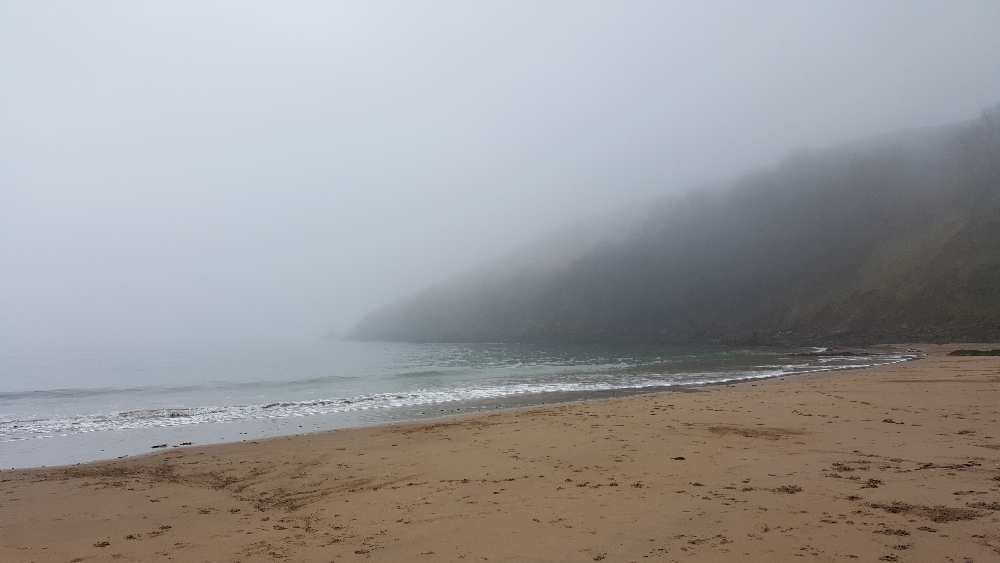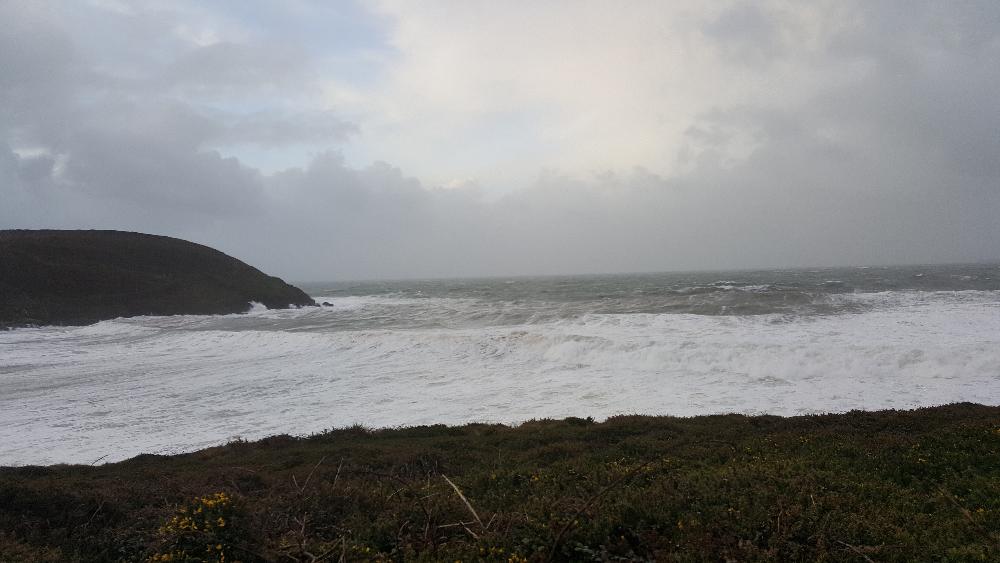Weather Conditions and Sea Swimming
The British weather is famous for being highly changeable. Even in the summer the weather can change day by day, sometimes hour by hour, sometimes fitting four seasons into one day.
When you are in a coastal environment, just as in the mountains, this is even more of a consideration and is highly applicable to the activity of sea swimming as the weather plays a major part in your whole sea swimming experience.

This applies not only to the obvious ways such as the sea conditions, but also the period leading up to your entry to the water and after your swim.
'There's no such thing as bad weather, only bad preparation & clothing'. This is especially true when you are taking the decision to enter the ocean environment and especially as water will dissipate heat from your body much faster than the air.
The advice is generally to plan for the worst, even if the weather looks glorious we would still advise taking winter clothing compressed into a dry bag along with all of your other swimming kit. Hopefully you will not need it but if you do, and you do not have it, then you will have a completely miserable experience.
You can see a full list of the recommended kit on this page but in summary fleeces, thick socks, hats and the very versatile and excellent dryrobe are all good choices. Even on a nice day if the wind is blowing, getting into a dryrobe is a nice experience when you get changed after your swim.
By the nature of sea swimming your wetsuit will likely not be much thicker than 2 or 3 mm. In the winter months and into the spring, the water will be cold, average in less than 10 degrees. Many sea swimmers for this reason wear a rash vest of some kind under the swimming wetsuit, although these are not really designed to give warmth so we suspect a lot of it is psychological! There are options to wear a neoprene vest under your wetsuit which would certainly provide more in the way of warmth in the water.
The other thing to bear in mind is not only the air and water temperature but the sea conditions.
Waves are caused by the effect of wind on the water. Basically stronger wind means higher waves.
With this in mind it is important to pay attention to the current weather conditions and also the forecast for the next 24 hours. Check the local news in the region you are swimming, tune into the local radio stations. Also, use the likes of Magic Seaweed, an excellent app/website that has detailed information on swells/waves, wind and tides. You can download this for Android or iPhone for free, simply search for 'magic seaweed'.
Safety is of paramount importance so some of the advanced swims are subject to change or cancellation at short notice due to adverse weather conditions, which affect the sea swimming conditions and your experience.
There are plenty of other options if this happens as many of our sea swimming locations have been chosen for their calmer environment, so you can opt for another route. If the weather does change halfway through your swim the key is to not panic. Accept it. Experience it. Learn from it.

In fact swimming in all weather conditions is a great way to improve your overall open water swimming skills as well as confidence because you are less likely to be stressed and panic if the weather does not play ball on your race day, or during future open water swimming activities. And it must be said swimming in the winter when the winter swells rolling is really exciting experience.
Those who opt to train or swim only on the finest days and in the best sea conditions will have difficulties if they are swimming and the weather or the sea conditions take a turn for the worse.
If the wind picks up and the waves get bigger, start practicing your bilateral breathing so that you can learn how to breathe away from the waves and on the other hand practice your timing so that you can check the incoming waves before they roll over you.
Arm positioning and sighting also play an important role when the weather turns, you can check out our swimming tips blog for more tips and tricks on all of this, we're constantly adding tips to our blog so remember to keep checking in from time to time!
On the other hand bad weather is it not only the only consideration. In the UK we do sometimes see a bit of sun! When we do get bouts of high pressure the sun can get quite fierce, so with this in mind the obvious recommendation is for plenty of sun cream and hydration before and after your swim. Avoid alcohol at any time before your swim.
We would also recommend some dark and/or polarised swim goggles as this will help with the glare of the sun on the sea which can be quite blinding.
In conclusion, the best thing for bad weather is to prepare for it in terms of training and equipment; just as the old saying goes but we would add a bit more to it:
'There's no such thing as bad weather only bad clothing, bad preparation, and lack of experience'.
